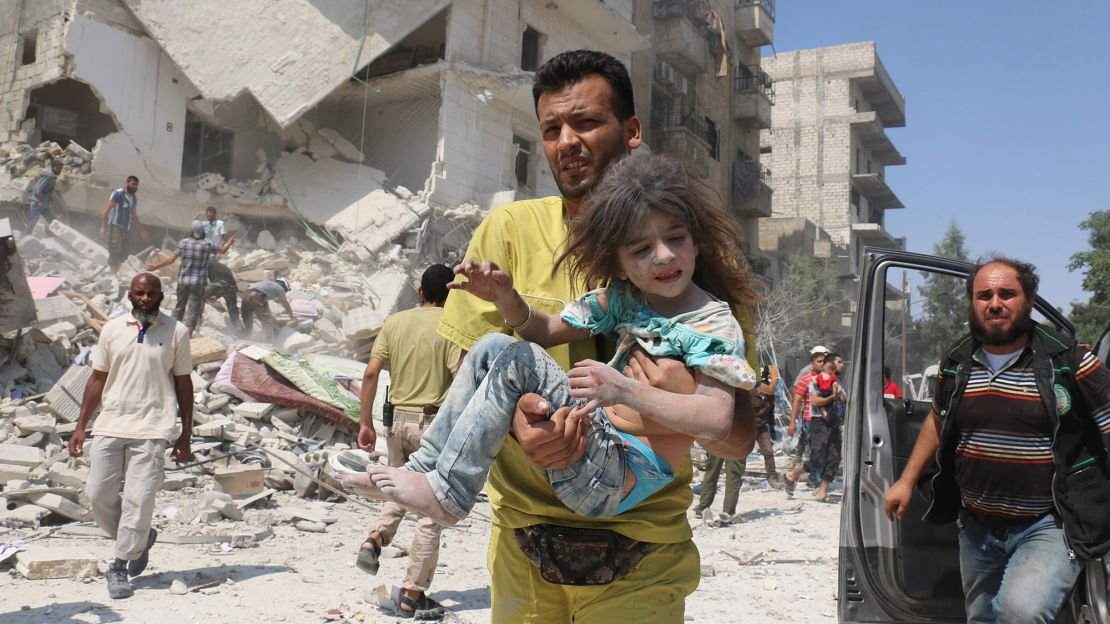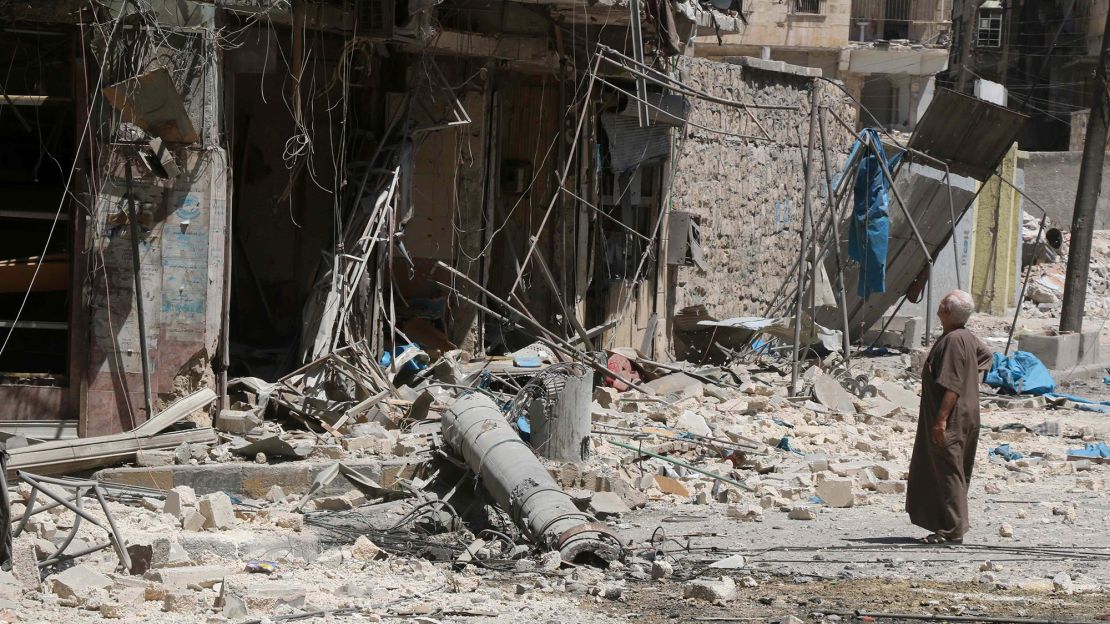Story highlights
Aleppo's once-bustling population of more than 2 million has dropped to fewer than 300,000
Syrian city has been at center of battle between rebels and regime for four years
It wasn’t the best look for a presidential candidate. Libertarian Gary Johnson was on MSNBC’s “Morning Joe” on Thursday when he was asked a simple question with an ever-so-complicated answer: What would he do about Aleppo?
Johnson’s response: “And what is Aleppo?”
MSNBC commentator Mike Barnicle seemed floored, replying, “You’re kidding.” Nope, Johnson wasn’t.
Johnson later said he understood Aleppo. But just in case he has a less-than-white-knuckle grip on one of the most pressing foreign policy matters facing the United States and world, allow us to explain.

This is Aleppo
A decade ago Aleppo was a bustling economic hub boasting more than 2 million residents. Its robust history and ancient architecture drew many tourists. After four years of hellish battle, it was estimated last month that the city was home to roughly one-tenth of that number, between 200,000 and 300,000.
Why the drop?
Brutal fighting, plain and simple. Many residents were killed. Others fled. Those who remained haven’t received much aid and are suffering shortages of food, fuel and medicine, a situation that grew only more desperate in July when President Bashar Assad’s forces bombarded a major supply artery into the city.
The fighting presses on, and even after rebel forces claimed to break the siege in southern Aleppo, humanitarian groups say there’s been little change to the residents’ plight.
What’s the casualty toll?

In Syria, it’s an estimated quarter-million. There are also 5 million who have fled the country, and 6.6 million people internally displaced. In Aleppo, the tolls are murkier. A recent report stated that 6,000 people, mostly civilians, died in 80 days of fighting.
Last month, the last 15 doctors serving the eastern part of the city wrote President Barack Obama to say that a medical facility in Syria was being bombed every 17 hours. At that rate, medical services could be destroyed in a month, “leaving 300,000 people to die,” they wrote.
Who’s dying?
The violence is indiscriminate, as evidenced by a suspected chlorine gas attack that injured children and killed market patrons in the eastern part of the city. A barrel bomb attack also claimed children as victims a few weeks ago. Watchdog groups blamed both attacks on the Assad regime, which has denied using chlorine gas for military purposes in the past.
What Aleppo parents tell their kids
In another disturbing case – this one with a happier ending – doctors had to deliver the baby of a mother seriously injured in a bomb attack. The child wasn’t breathing as he emerged from the womb, but doctors quickly got his lungs working. His mother survived, too.
Who is going to win?
Likely nobody. Reporting from such a violent locale can be tricky, but earlier this year, CNN’s Clarissa Ward went undercover behind rebel lines to give a fascinating picture of what’s happening on the ground. Months later, she would tell the UN Security Council point-blank, “There are no winners in Aleppo.”
Is any end in sight?
Well, no. This week, diplomats, politicians and soldiers met in London to discuss the situation, but their plan was billed not as a blueprint for peace but a starting block for negotiations.
As the war involves a cast of warring players who are unlikely to get along (and many of whom weren’t present in London) – including Russia, the United States, Turkey, ISIS, Hezbollah and Iran – many are uncertain this is the best path to bringing the crisis under control.

























